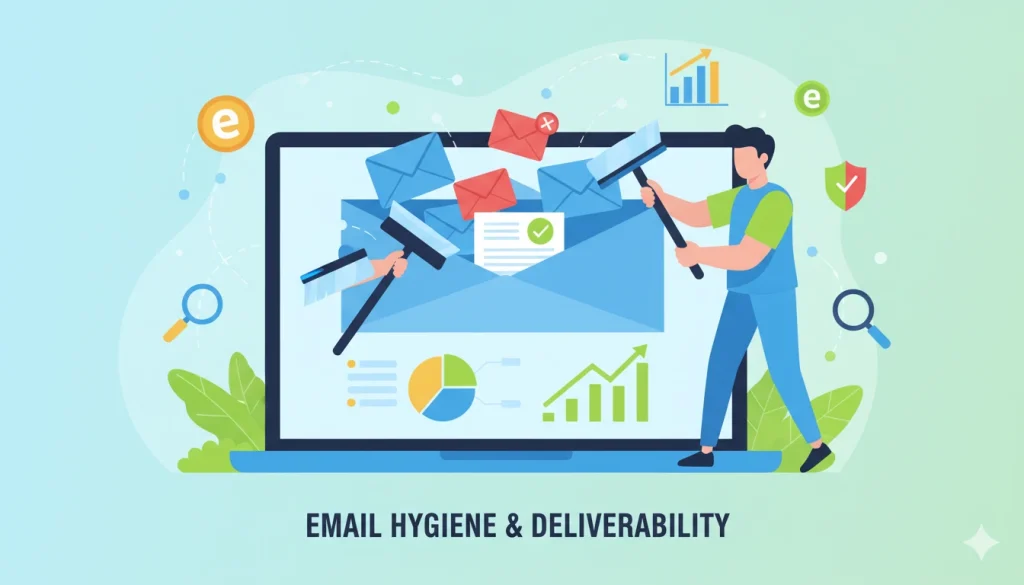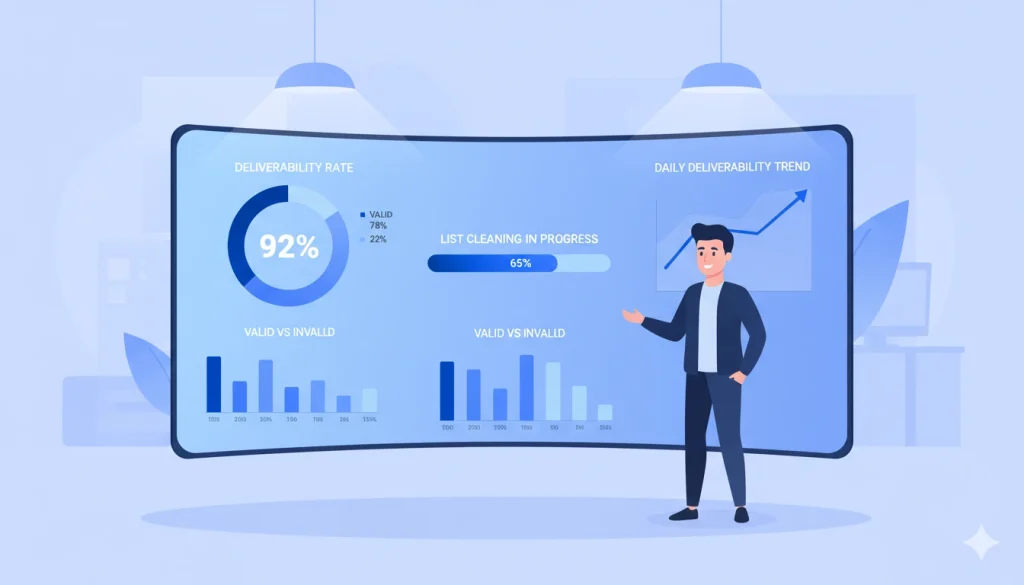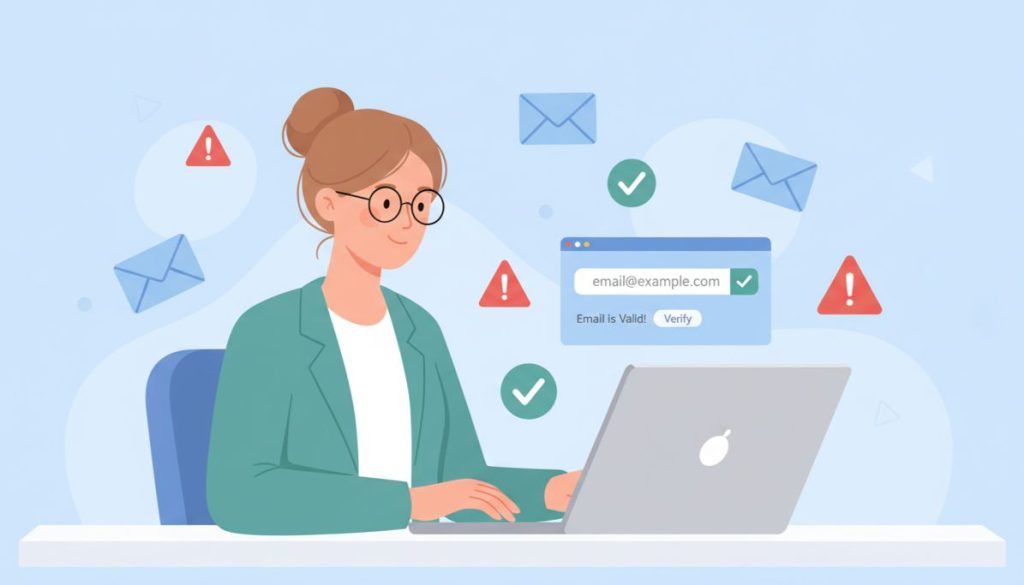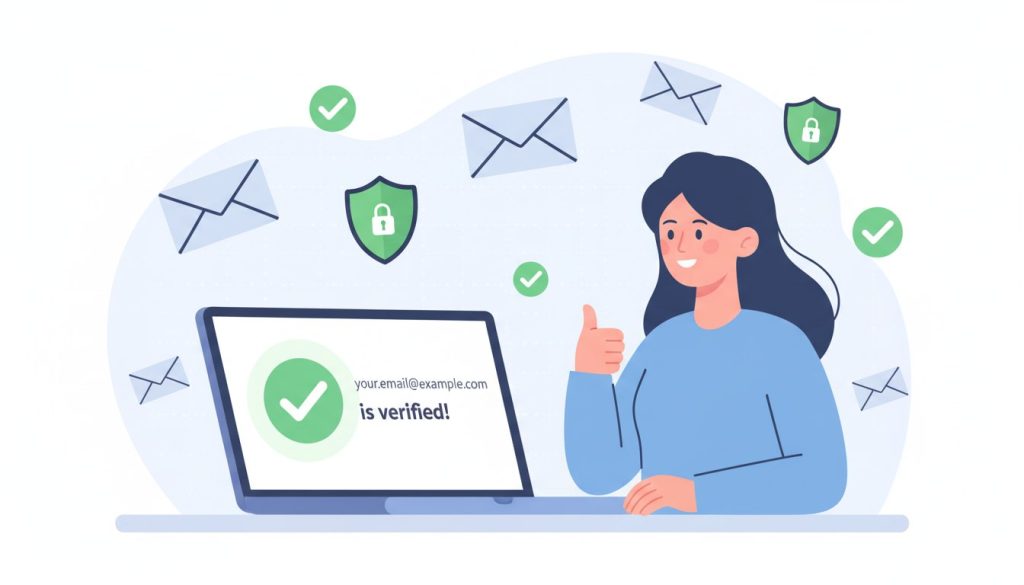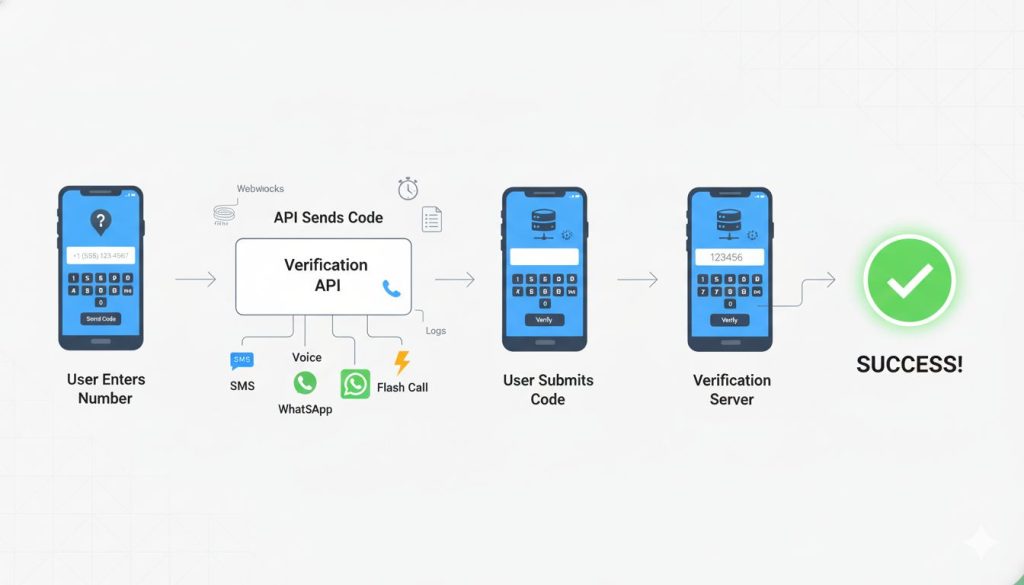Most of us have been there—you craft a campaign you’re proud of, hit send, and then… bounce after bounce. It’s frustrating because you did everything right, but the emails never reached real inboxes. That’s where a bulk email validator comes in. It quietly saves your deliverability, protects your sender reputation, and keeps your marketing dollars from slipping through the cracks.
In this guide, we’ll break down what a validator does, how it works, and how to make it part of your everyday process. No jargon, no fluff—just practical advice to help you send smarter, cleaner, and more confidently.
What Is a Bulk Email Validator, Really?
Before you use one, it helps to know what a bulk email validator actually does. Think of it as a filter that keeps your list clean and your sending smooth.
It runs bulk email verification to check each contact quickly. You get clear answers on email verification outcomes so you can verify email addresses with confidence. It looks at email address syntax to catch typos early, then confirms whether an email address exists without sending a message.
You avoid manual guesswork, keep focus on strategy, and trust that the list you upload is ready for real conversations with real people.
Why It Matters for Email Deliverability and Revenue
You cannot build consistent performance if your data is messy. Invalid contacts drag down results and make every send more risky.
Clean lists improve email deliverability so more messages land where they should. You protect your email sender’s reputation, which lifts inbox placement across email campaigns. You also stabilize your bounce rate and reduce the chance of spam complaints that damage trust with mailbox providers.
Cleaner data means fewer wasted sends and stronger engagement. That translates into lower costs per conversion and higher revenue per send. When you keep hygiene tight, your metrics stop swinging and your planning gets easier. The payoff shows up fast in opens, clicks, and pipeline.
How Validators Actually Work Under the Hood
A strong validator goes step by step so you know what to keep and what to remove.
First, it checks formatting and domains, then confirms server readiness. It flags disposable emails that never engage and identifies catch all emails that need careful treatment. It also screens for spam traps that can harm your reputation even if your content is solid.
Next, it looks for patterns tied to invalid email addresses and performs safe server checks to classify results. Good systems behave like a bulk email checker, giving you clear statuses you can act on at scale. You also see where email validation is confident and where it is cautious, which lets you tailor follow-up rules.
The outcome is simple. You upload a file, run the process, and get actionable categories with accurate results that map to your sending policies and risk tolerance.
Choosing the Right Validator Without Guesswork
You do not need a dozen features. You need proof that the tool is trustworthy and fits your workflow.
Start with accuracy testing on a known sample. Ask for details on data security, including retention windows and certifications. Check how it connects to your stack, especially common email service providers and any analytics you rely on.
If you build or automate, confirm there is a stable email verification api with clear limits and uptime numbers. Many teams also want native exports to Google Sheets so nontechnical teammates can review results.
Look for pricing that scales fairly and offers a free account to validate the fit before you commit. Compare claims about the highest accuracy to your own benchmark. Favor vendors that share methodology, show audit logs, and provide support that answers with specifics, not generic phrases. Accurate beats flashy every time.
When and Where to Use Validation in Your Funnel
Validation works best when it is part of your normal rhythm. Place it where it prevents problems, not after.
Use real time email verification at signup forms to stop bad data at the door. Clean pre-send lists before the next campaign so more messages are delivered successfully. Add a cadence for aging contacts so future emails do not suffer as people change jobs.
Sales teams can verify lists from events or uploads before outreach. Marketing can align schedules so email marketing calendars always use fresh segments.
Keep it simple. Define when to accept, quarantine, or remove results. Automate syncing back to your CRM and ESP. When validation runs quietly in the background, you spend less time fixing mistakes and more time creating campaigns that move the needle.
Step-By-Step: Clean Your List The Smart Way
You want a simple process you can trust. Here’s the workflow I use when I need dependable results at scale.
Prep your file first. Then run checks in a tight loop.
- Export your bulk lists from every source into one CSV.
- Remove duplicate email addresses and unify fields like country or source.
- Fix typos and catch invalid syntax with an email tester before deeper checks.
- Push the file through your email verifier api to validate emails in one pass.
- Separate deliverable addresses, unknowns, and fails into clear tabs.
- Build a clean email list by keeping only what passes your rules.
- Append notes on source quality to your email database so patterns are visible later.
Now act on the results.
- Route likely hard bounces to suppression.
- Create a review queue for unknowns and VIP domains.
- Document settings for your verification tool so the next run is faster.
Keep this playbook close. It turns list cleanup from a chore into a repeatable win.
Avoid These Traps That Kill Good Emails
Even strong operators stumble when pressure is high. Steer clear of these common mistakes.
- Purging all duplicate emails without checking which record has the most recent consent.
- Letting fake emails slip in from events or contests.
- Treating all unknowns as risky emails and deleting potential buyers.
- Ignoring content issues and blaming performance on “list quality” while sending to bad emails.
- Trusting shiny other tools without validating against a known sample.
- Forgetting warmup and trying to send emails at full blast after a big import.
Review this list before every campaign. You will avoid preventable errors and keep your pipeline healthy.
Advanced Tactics For Teams That Send At Scale
Once the basics are steady, level up your operations with a few targeted upgrades.
Use a bulk email verifier as a pre-flight gate on large imports. Add an email verification service for always-on checks inside forms and chat. If you test vendors, stack them. Pick the best email verification service by running the same sample and comparing outcomes.
Tie results into your email marketing tools. Enrich leads with an email finder only when the account merits it. If you host forms, add a lightweight WordPress plugin for capture hygiene. Build rules for detecting invalid patterns and auto-route them to review.
Coach your team of email marketers to map statuses to send policies. Flag invalid addresses for suppression, throttle unknowns, and reward good sources with faster paths to send. That balance protects reach without slowing growth.
Proving ROI: Metrics, Benchmarks, And Quick Math
You need proof that hygiene pays. Track the right signals and make the math easy.
Start with goals that reduce bounce rates and lift engagement. Watch delivery, opens, clicks, and conversions across cohorts. Tie improvements back to protected email messages that now reach more buyers.
Cost is simple. Compare the price of the service to revenue gains from cleaner sends. Add savings from fewer spam reviews and lower support load. If a vendor offers free email credits for testing, run a before-and-after on the same segment.
If you are an email marketer, keep a weekly dashboard that highlights trend lines and exceptions. A tidy mailing list clean curve is the foundation of stable growth.
Industry-Specific Playbooks You Can Borrow
Different teams need different guardrails. Use these shortcuts to move faster.
- Ecommerce: Validate new email lists from giveaways. Protect transactional flows tied to shipping and returns for real customers.
- SaaS: Clean your trial email list weekly. Gate product invites behind a free email checker and a lightweight email verifier.
- Agencies: For marketing agencies, standardize client intake, add a free email verifier for quick audits, and maintain source notes.
- Events: De-duplicate scans and remove bad email addresses from kiosks and QR forms before outreach.
Start small, measure, and scale what works. These patterns keep your programs fast, focused, and resilient.
Keep Your Lists Clean, Keep Your Results Strong
Good email deliverability isn’t luck—it’s discipline. When you validate your lists regularly, you protect your sender reputation, save money, and reach more real people who want to hear from you.
Start small: clean one list, measure the improvement, and make validation part of your normal workflow. Over time, it becomes second nature, just like checking grammar before hitting send.
And if you ever want a simple, reliable way to verify lists in bulk or in real time, our email verification tool can help. It’s built for accuracy, speed, and peace of mind—no sales pitch, just results.

